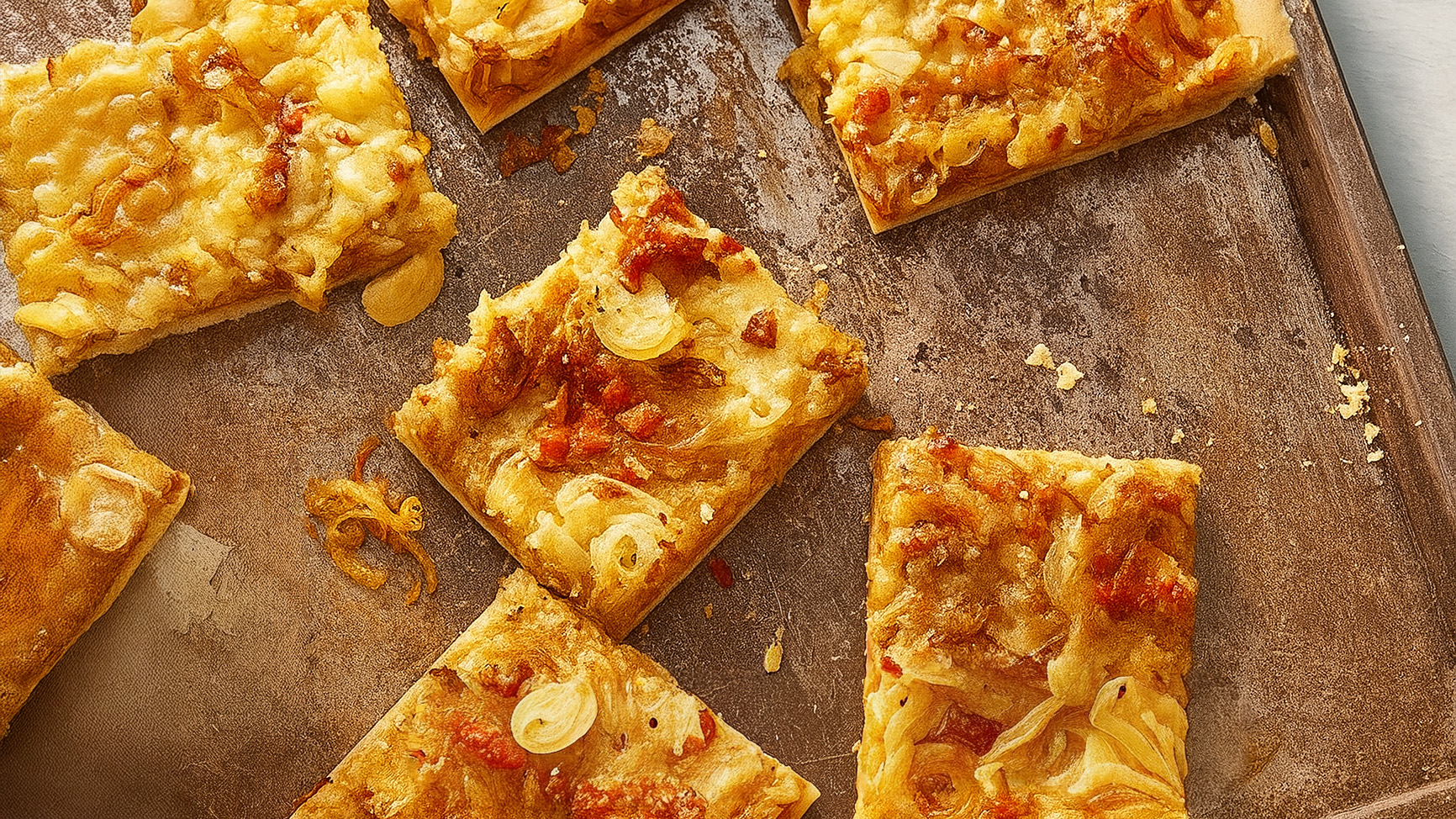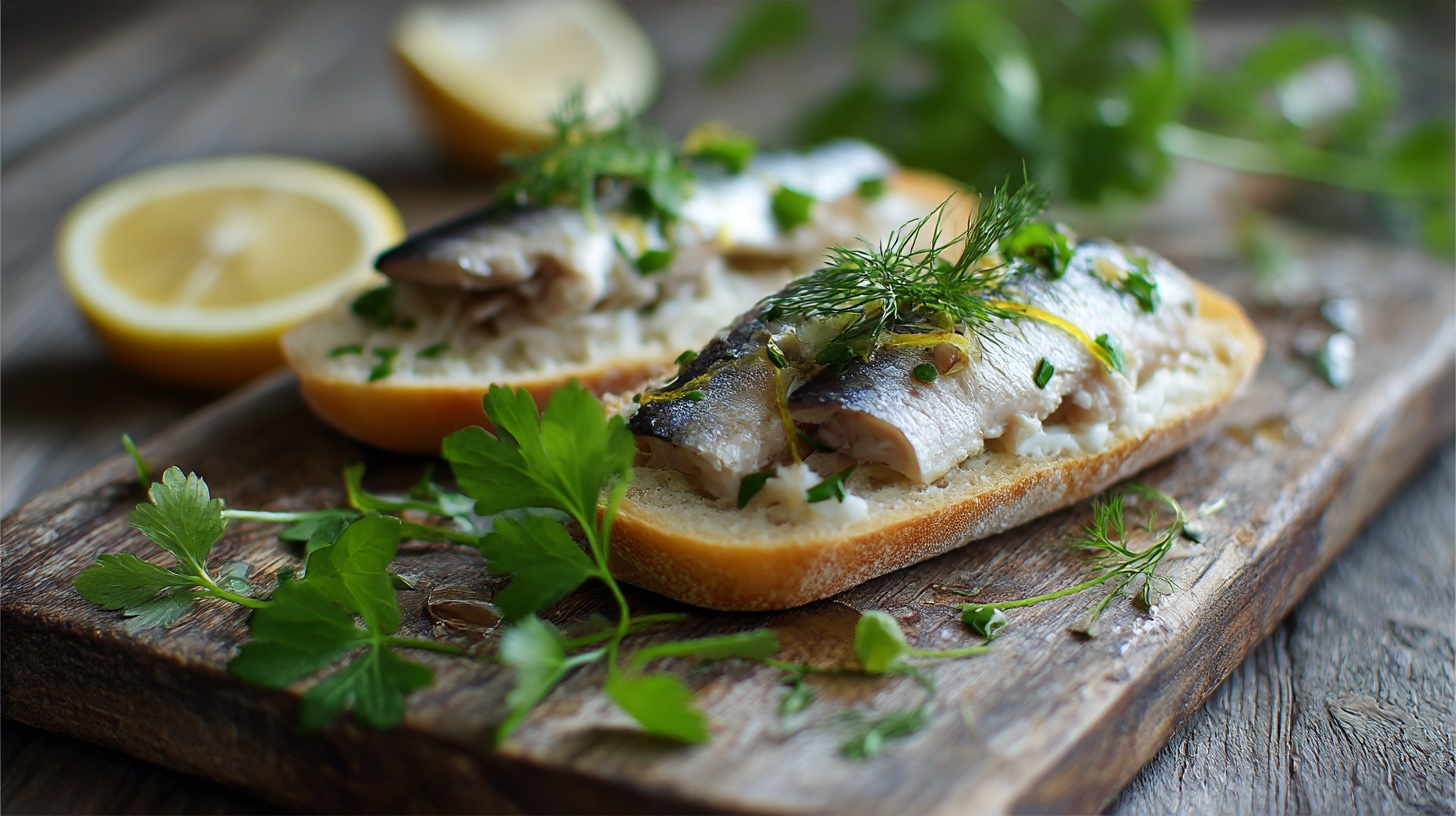Zwiebelkuchen: How Onions, Bacon, and Wine Became an Autumn Tradition
There are foods that announce the changing of the seasons more reliably than calendars or weather apps. In Germany, autumn doesn’t truly begin until Zwiebelkuchen makes its fragrant debut. The name might not sound particularly poetic – it literally means “onion cake” – but make no mistake, this golden, aromatic, hearty pie has more character than many of the famous pastries that overshadow it. Zwiebelkuchen is to Germany what pumpkin pie is to America, or what cheese and onion pasty is to Britain on a rainy afternoon: humble, comforting, unapologetically rustic, and more than a little addictive.
The history of Zwiebelkuchen goes back several centuries, most likely born out of necessity rather than culinary ambition. Wine-making regions like the Rhineland-Palatinate, Franconia, Baden, and parts of Alsace needed something hearty to feed workers during the grape harvest. Flour, onions, and a bit of pork fat were cheap and available, and a slab of onion pie paired beautifully with the young Federweißer – that slightly fizzy, cloudy, sweet wine that’s essentially grape juice in mid-fermentation. Farmers, bakers, and vintners weren’t thinking of Instagram appeal or plating aesthetics; they were thinking of feeding hungry hands and keeping spirits high in chilly vineyards. And it worked so well that the tradition survived centuries of wars, borders shifting, and the arrival of vegan influencers.
In its earliest form, Zwiebelkuchen was little more than a flat bread covered in sautéed onions, eggs, and bits of bacon. Think of it as a cousin of the French tarte flambée (flammekueche), but with less cream and more attitude. The dough was made from simple rye or wheat flour, often baked in communal ovens after the bread, using the residual heat. Over time, each region developed its own twist. In Swabia, you’ll find a yeast dough version with quark or sour cream in the filling. In Franconia, it leans towards a flakier, more tart-like structure. In the Saarland and Alsace, it’s thinner and crispier, practically a German answer to pizza. And in Saxony, some recipes call for caraway seeds – controversial, yes, but oddly satisfying if you like a hint of spice cutting through all that sweet onion and bacon richness.
The secret of its appeal lies in its contradictions. Zwiebelkuchen is peasant food that behaves like comfort food, and comfort food that borders on gourmet when baked to perfection. It smells sweet yet savoury, tastes hearty yet light, and manages to make onions – that most underappreciated of vegetables – the star of the show. When the onions are slowly cooked until translucent, their sharpness melts away into a soft, caramel-like sweetness that mingles with smoky bacon, creamy custard, and a crust that walks the fine line between bread and pastry. The first bite is warm, soft, and subtly sweet; the second is savoury, salty, and rich; and by the third, you’re wondering why you don’t eat this every weekend.
What makes it truly special, though, isn’t just the taste but the ritual. Zwiebelkuchen season arrives with the grape harvest in September and October. It’s celebrated in wine taverns, markets, and festivals across southwestern Germany. People sit at long wooden tables, drink Federweißer straight from the bottle (because it ferments too fast for corks), and eat steaming slabs of onion cake off paper plates. You can spot a true local by the purple stain on their fingers from the young wine. There’s a collective joy in this moment – the transition from summer to autumn, the smell of onions wafting through villages, the low hum of conversation in dialects that change every 20 kilometres.
Pairing drinks with Zwiebelkuchen is a delicate business if you take it seriously, and a joy if you don’t. The classic pairing is, of course, Federweißer. It’s sweet, slightly sparkling, and still fermenting, meaning it can continue bubbling away in your fridge if you’re not careful. The sweetness balances the savoury filling perfectly. If you can’t find Federweißer (outside Germany it’s notoriously elusive because it spoils fast), try a semi-sweet Riesling, a Gewürztraminer, or even a chilled cider. The acidity and fruitiness cut through the richness of the bacon and cream. If you’re a beer loyalist, go for something malty and amber rather than hoppy – a Märzen or Dunkel does the trick.
As for other foods to complement it, Zwiebelkuchen doesn’t need much of an entourage. It’s hearty enough to be a meal, though a small salad of bitter greens like endive or rocket gives a refreshing contrast. Some people enjoy it with a dollop of sour cream or a bit of mustard on the side – the mustard enthusiasts are usually from Bavaria, where there’s a firm belief that mustard improves everything. If you’re serving it as part of a larger spread, think rustic and regional: pretzels, sauerkraut, smoked sausages, or a slice of cold roast pork.
There are even sweet variations in some areas, replacing bacon with apples or pears and using cinnamon instead of caraway. Those versions are often eaten for breakfast or with afternoon coffee, and they reveal something about German baking culture – it loves a good remix. You could bake a savoury slice in the morning and a sweet one in the afternoon, and nobody would bat an eyelid.
From a health perspective, Zwiebelkuchen walks the line between comfort and caution. Onions are genuinely good for you – they’re packed with antioxidants, help regulate blood sugar, and have anti-inflammatory properties. Bacon, cream, and pastry, on the other hand, might not be the poster children of wellness. But then again, it’s autumn, you’re sipping Federweißer, the air smells of wood smoke, and your friends are laughing across the table. Who cares about cholesterol at that precise moment? Moderation, as always, is the secret ingredient.
If you want to find Zwiebelkuchen outside Germany, your best bet is in places where German wine traditions travelled – Alsace in France, parts of Switzerland, or even Austrian taverns in Styria. In London, a few German bakeries and markets (especially during Oktoberfest season) bake it fresh. Look for stalls selling Federweißer or “new wine”; where there’s one, the other won’t be far behind. Some German restaurants in Britain and the US serve it as a seasonal special, though it rarely tastes as magical without the chill of an October afternoon and the laughter of grape pickers nearby.
Now, if you’re brave enough to make it at home, you’re in for a treat that will make your kitchen smell like a Rhineland wine tavern. The process is part meditation, part alchemy. It takes time, but not skill. You can make it on a yeasted dough base or shortcrust, depending on your patience and whether you’re more of a baker or a practical eater.
Zwiebelkuchen Recipe
For a classic Swabian-style Zwiebelkuchen, you’ll need about a kilo of onions – yes, a kilo. Slice them thinly and cook them slowly in butter or oil until they’re soft and translucent, about 15 to 20 minutes. Don’t rush this part; this is where all the magic happens. Meanwhile, fry about 150 grams of diced bacon until crisp, then mix it into the onions. Set the mixture aside to cool.
For the dough, dissolve a packet of dry yeast in lukewarm milk, stir in a pinch of sugar, then mix with flour, a bit of butter, and salt until you have a smooth, elastic dough. Let it rise for about an hour, covered with a towel. Roll it out and line a buttered baking tin with it, letting the edges rise a little up the sides.
In a separate bowl, whisk three eggs with 200 millilitres of sour cream or Crème Fraîche, season generously with salt, pepper, and nutmeg, and combine this mixture with the cooled onions and bacon. Spread it evenly over the dough. Sprinkle a pinch of caraway seeds if you’re in a bold mood, or skip them if you’ve already made peace with your spice tolerance.
Bake at around 200°C for 35 to 45 minutes, until the top is golden and just starting to brown around the edges. Let it rest for a few minutes before slicing. Serve it warm with a glass of wine that makes you feel slightly irresponsible. If you want to channel the spirit of a German wine harvest, eat it outside, even if it’s cold, and make sure your plate wobbles slightly on a wooden table.
There’s something charmingly unpretentious about Zwiebelkuchen. It’s food that refuses to conform to modern rules about lightness, plating, or dietary trends. It smells unapologetically of onions, tastes of tradition, and pairs best with friends and laughter. And when the last crumb is gone, the house still smells of caramelised onions and butter for hours – a domestic perfume that says, autumn has arrived.



